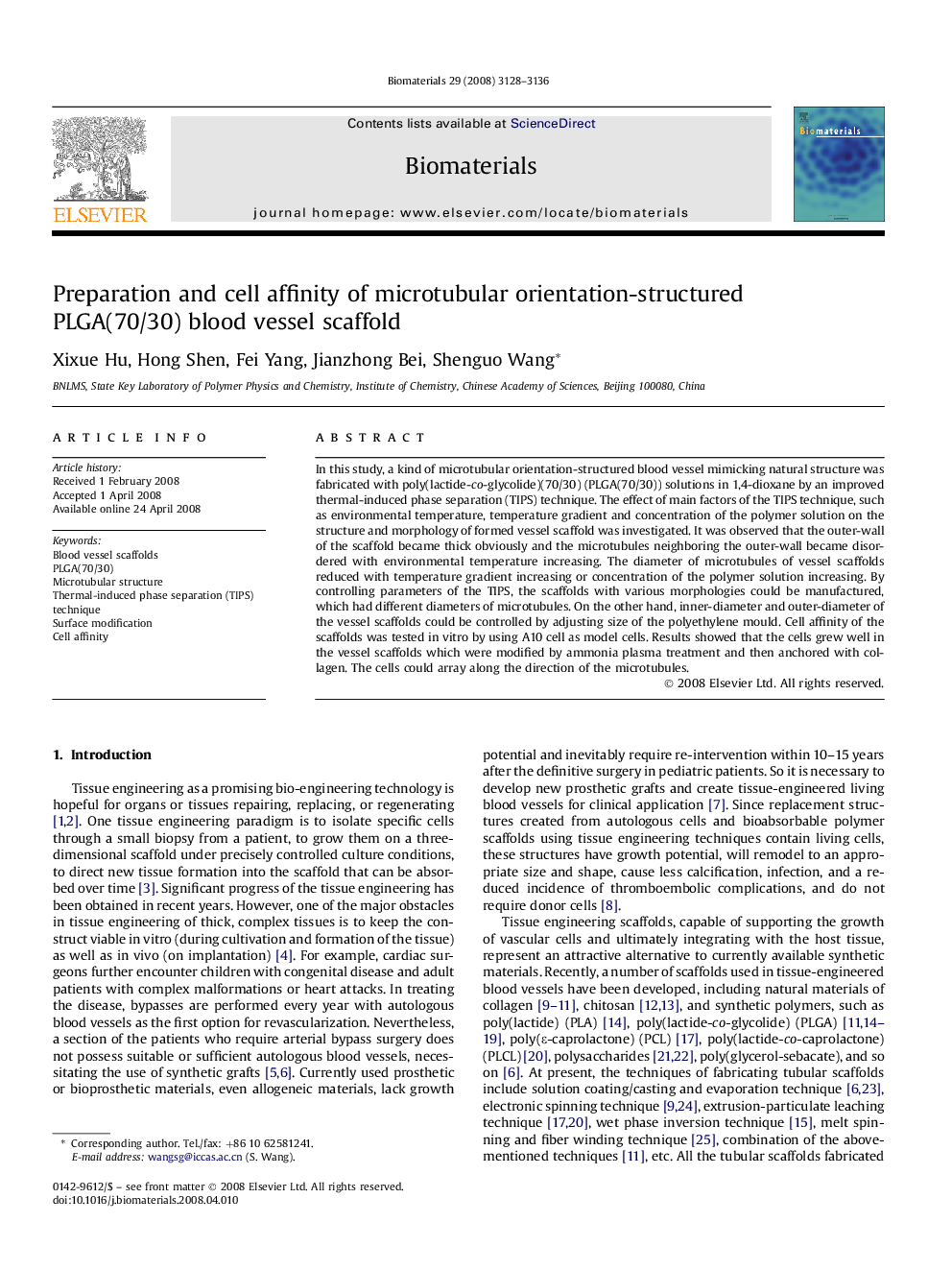| Article ID | Journal | Published Year | Pages | File Type |
|---|---|---|---|---|
| 9468 | Biomaterials | 2008 | 9 Pages |
In this study, a kind of microtubular orientation-structured blood vessel mimicking natural structure was fabricated with poly(lactide-co-glycolide)(70/30) (PLGA(70/30)) solutions in 1,4-dioxane by an improved thermal-induced phase separation (TIPS) technique. The effect of main factors of the TIPS technique, such as environmental temperature, temperature gradient and concentration of the polymer solution on the structure and morphology of formed vessel scaffold was investigated. It was observed that the outer-wall of the scaffold became thick obviously and the microtubules neighboring the outer-wall became disordered with environmental temperature increasing. The diameter of microtubules of vessel scaffolds reduced with temperature gradient increasing or concentration of the polymer solution increasing. By controlling parameters of the TIPS, the scaffolds with various morphologies could be manufactured, which had different diameters of microtubules. On the other hand, inner-diameter and outer-diameter of the vessel scaffolds could be controlled by adjusting size of the polyethylene mould. Cell affinity of the scaffolds was tested in vitro by using A10 cell as model cells. Results showed that the cells grew well in the vessel scaffolds which were modified by ammonia plasma treatment and then anchored with collagen. The cells could array along the direction of the microtubules.
